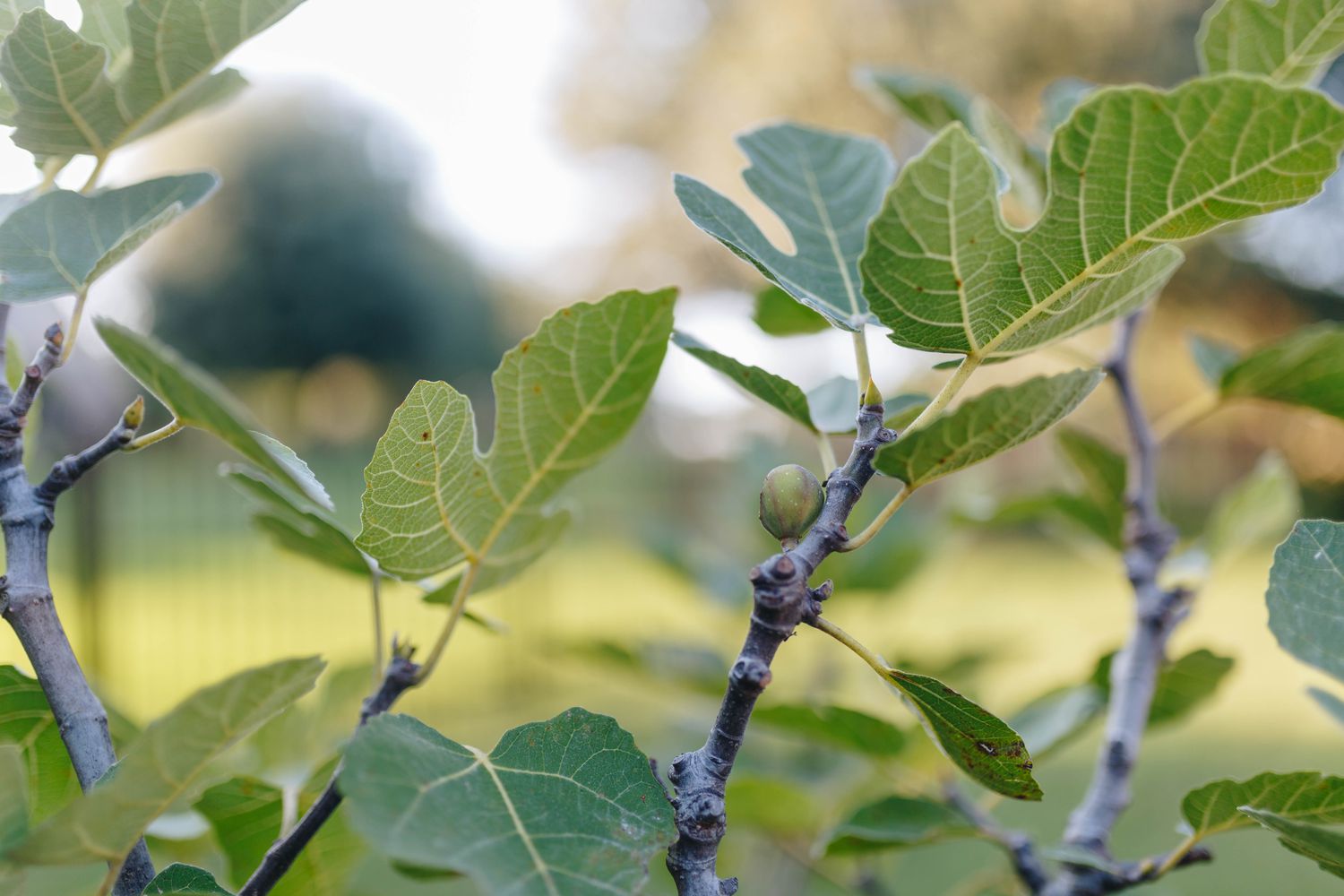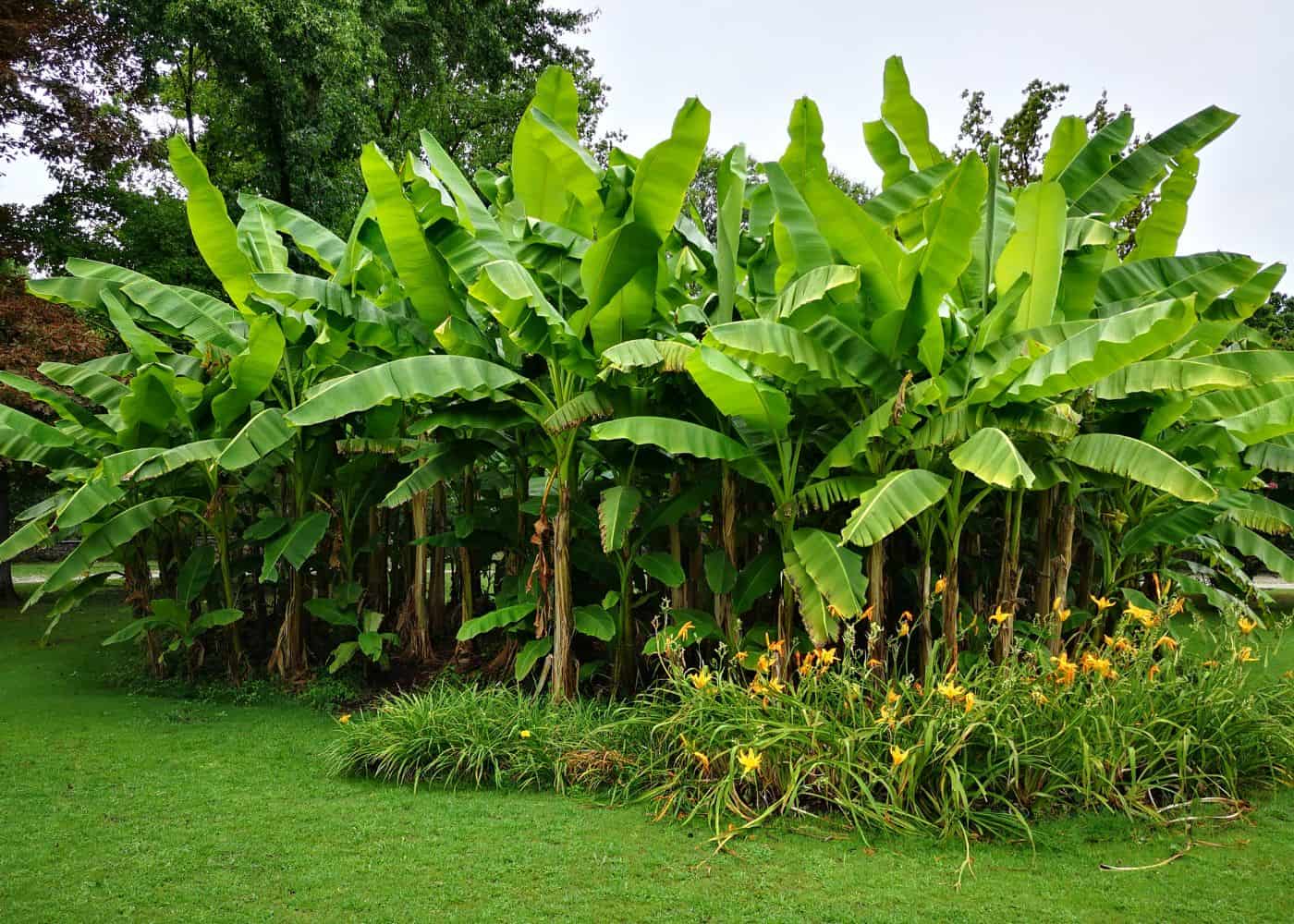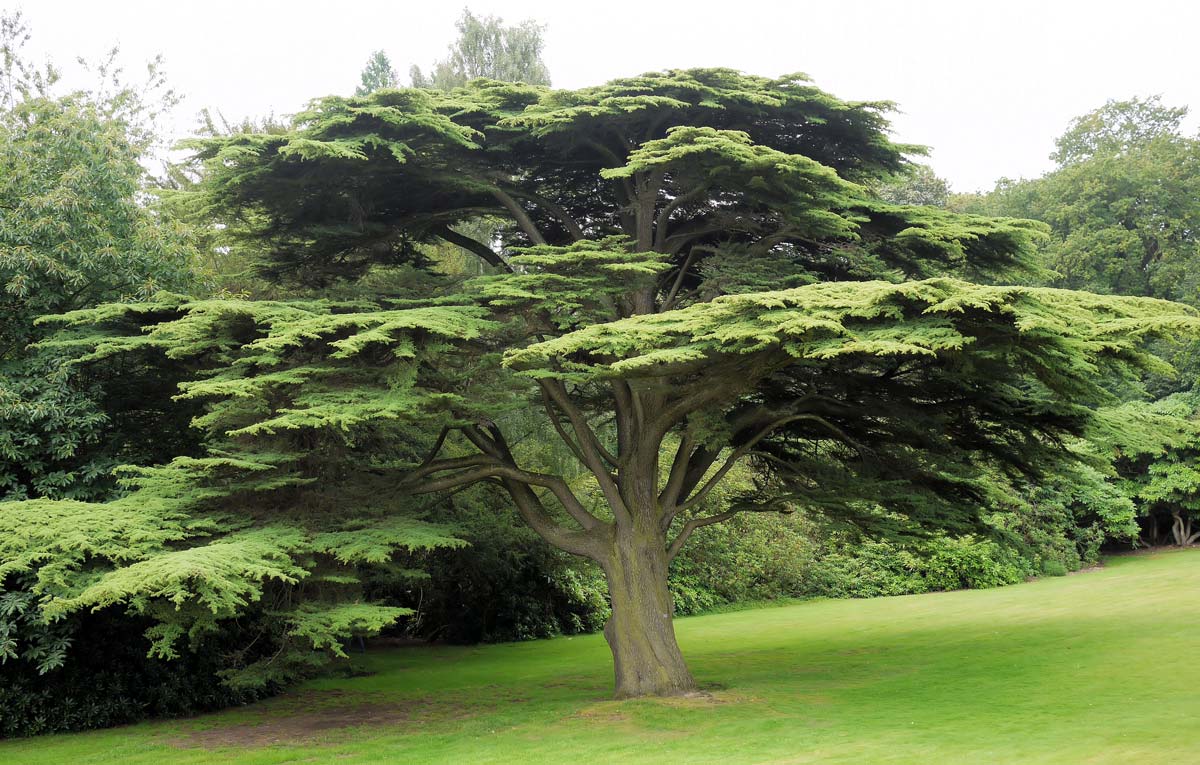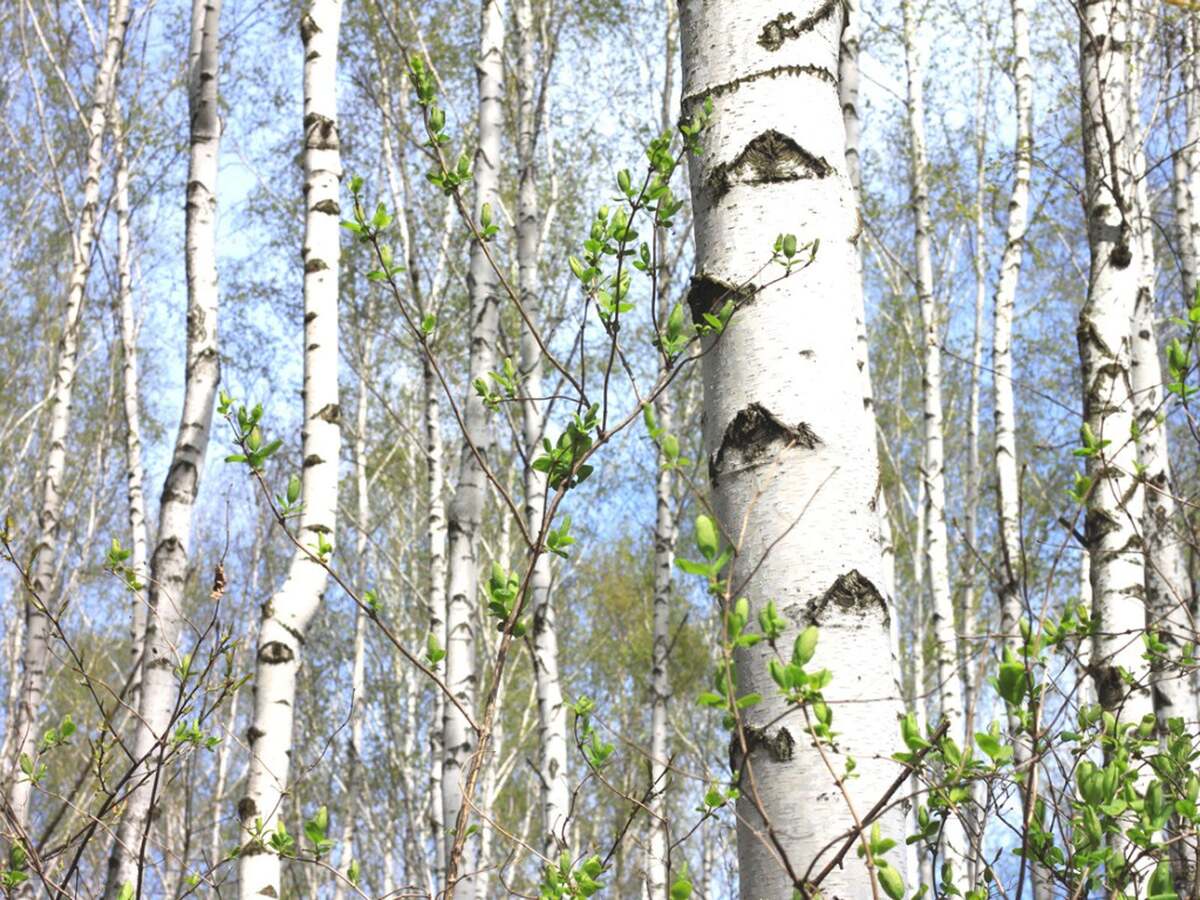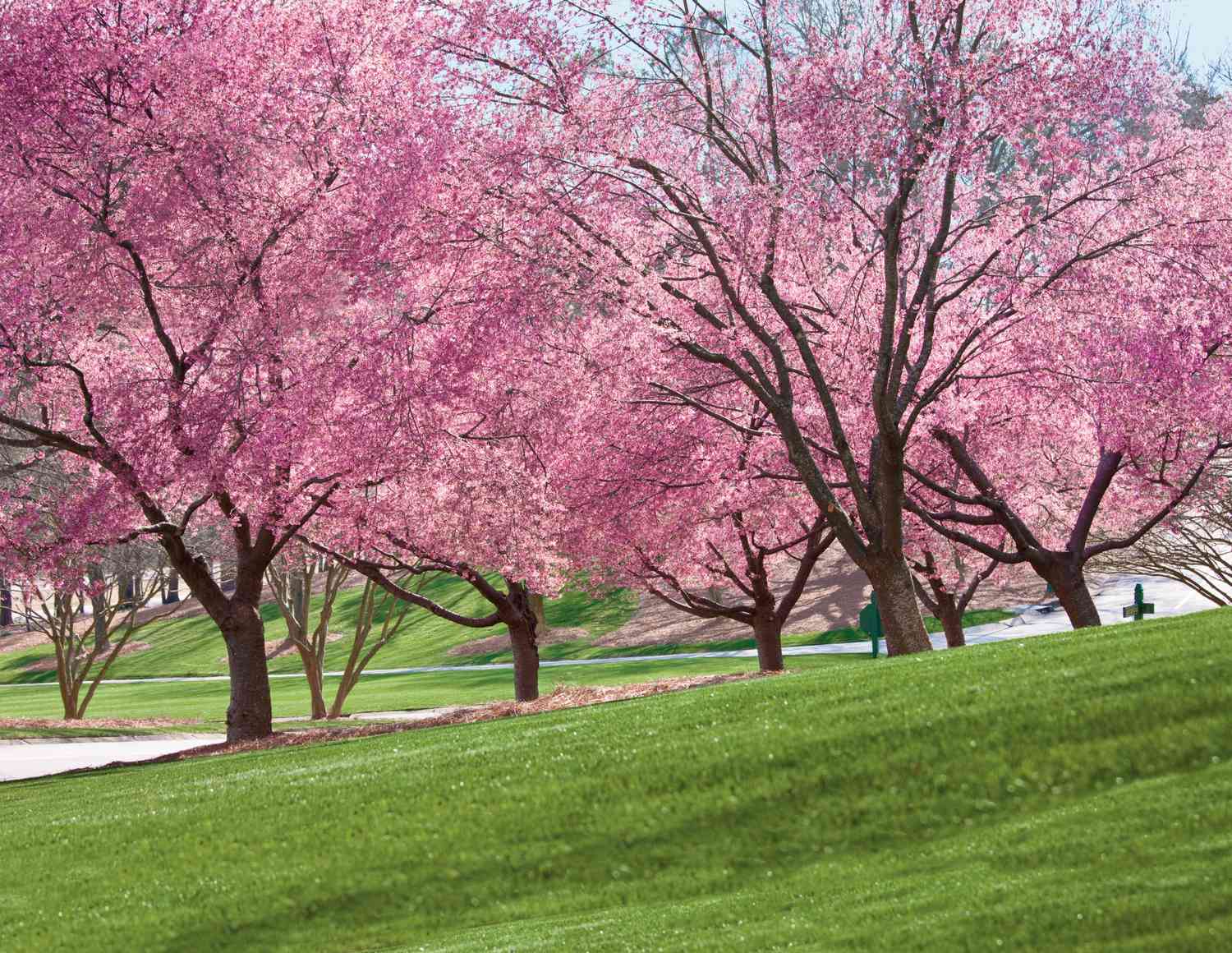Home>Gardening News and Trends>Latest News>How Tall Do Redbud Trees Get
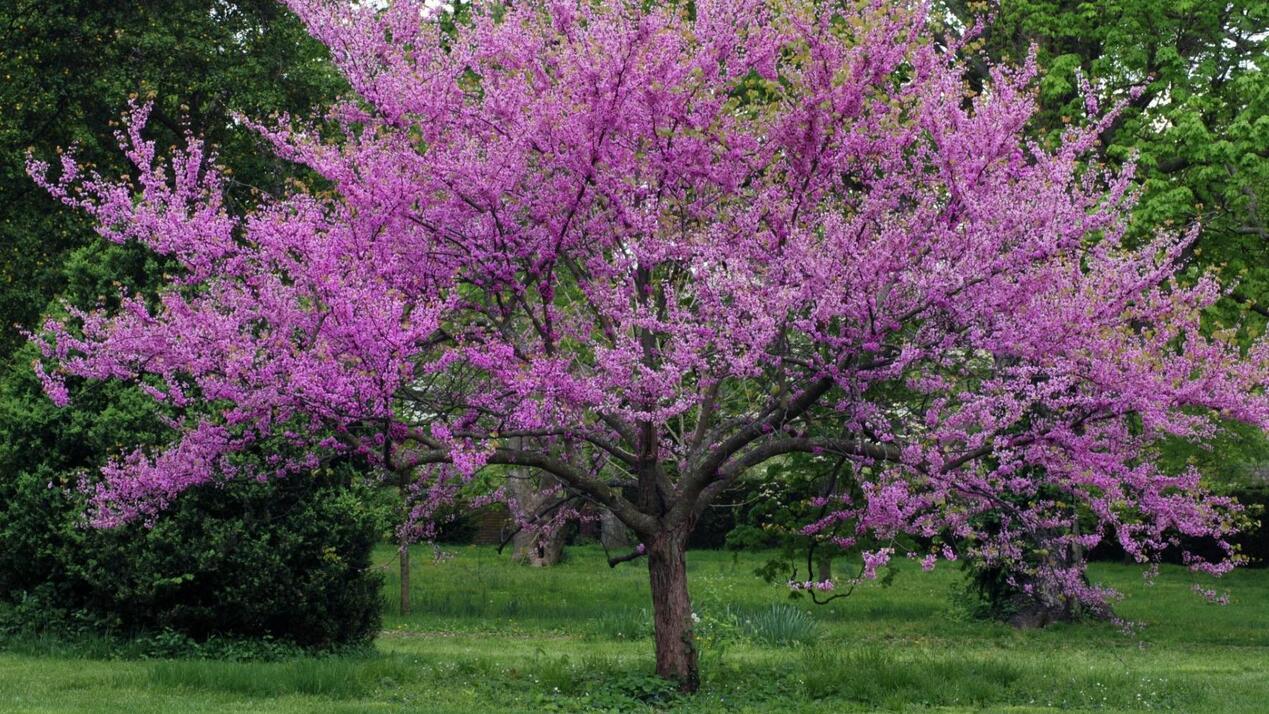

Latest News
How Tall Do Redbud Trees Get
Modified: January 22, 2024
Find out the latest news on how tall redbud trees can grow, including tips and information on cultivation and maintenance.
(Many of the links in this article redirect to a specific reviewed product. Your purchase of these products through affiliate links helps to generate commission for Chicagolandgardening.com, at no extra cost. Learn more)
Table of Contents
Introduction
Redbud trees are a magnificent sight to behold. With their vibrant pink or purple blossoms and heart-shaped leaves, they add a touch of natural beauty to any landscape. Not only are they visually stunning, but they also offer numerous benefits to the ecosystem. These trees provide shelter and food for various wildlife, including birds and butterflies, and contribute to the overall health of the environment. If you are considering planting a Redbud tree or are simply curious about their height potential, this article will provide you with valuable insights.
Redbud trees, also known as Cercis, belong to the family Fabaceae and are native to North America and parts of Central and Eastern Asia. They are deciduous trees, meaning they shed their leaves in the fall and regrow them in the spring. Redbuds are known for their compact size and rounded growth habit, making them an excellent choice for small yards or urban environments. However, it is essential to understand that the height of a Redbud tree can vary depending on several factors.
In this article, we will explore the characteristics of Redbud trees and the factors that can influence their height. Additionally, we will discuss the average height of Redbud trees and provide useful insights for landscaping considerations. By the end of this article, you will have a comprehensive understanding of how tall Redbud trees can grow and how to incorporate them effectively into your outdoor space.
Characteristics of Redbud Trees
Redbud trees are renowned for their unique and eye-catching features. Understanding their characteristics is crucial in appreciating their beauty and knowing how they can thrive in various environments.
One of the most notable traits of Redbud trees is their captivating flowers. In early spring, before the leaves emerge, the branches become adorned with clusters of small, delicate blossoms. These flowers can range in color from soft pink to deep magenta, depending on the specific variety. The blooms not only add a pop of color to the landscape but also serve as a vital food source for pollinators like bees and butterflies.
Aside from their beautiful flowers, Redbud trees have distinct heart-shaped leaves that provide shade and create a lovely canopy. These leaves emerge as a vibrant green in the spring and transition to yellow or golden tones in the fall, offering a stunning display of autumn colors.
Another unique characteristic of Redbud trees is their attractive bark. Younger trees typically have smooth bark that can range from gray to silvery-gray. As the trees mature, the bark develops furrows and ridges, adding an interesting texture to their overall appearance.
In terms of size, Redbud trees are known for their relatively small stature. On average, they can reach a height of 20 to 30 feet, with a spread of 25 to 35 feet. These dimensions make them suitable for smaller yards or urban spaces where space may be limited.
It is important to note that Redbud trees are adaptable and can grow in a variety of conditions. They thrive in well-draining soil and prefer locations with full or partial sunlight. Additionally, Redbuds are classified as hardy trees, with most varieties being able to withstand cold temperatures down to -20°F (-29°C).
Overall, the unique characteristics of Redbud trees, from their stunning flowers and heart-shaped leaves to their attractive bark and small size, make them a beloved choice for adding natural beauty to any landscape.
Factors Affecting Redbud Tree Height
The height of a Redbud tree can be influenced by various factors, both intrinsic to the tree itself and external environmental conditions. Understanding these factors can help you anticipate the potential height of your Redbud tree and make informed decisions when it comes to planting and maintenance.
Genetics play a significant role in determining the height of a Redbud tree. Different varieties and cultivars have varying growth habits and potential maximum heights. Some cultivars, such as the ‘Forest Pansy’ or ‘Ace of Hearts’, are known for their compact and smaller size, reaching around 15 to 20 feet tall, while others, like the ‘Eastern Redbud’, can grow up to 30 feet or more. When selecting a Redbud tree, it is essential to consider the specific cultivar and its growth characteristics to ensure it fits well within your landscape.
The age and health of the Redbud tree can also impact its height potential. Younger trees typically have more vigorous growth and can achieve their maximum height faster compared to older, established trees. Additionally, providing proper care, including regular watering, mulching, and pruning, can contribute to the overall health of the tree, allowing it to reach its full height potential.
Environmental conditions also play a significant role in determining how tall a Redbud tree can grow. Soil quality, including factors like fertility, drainage, and pH level, can affect the tree’s growth and overall health. Redbud trees generally thrive in well-draining soil and prefer slightly acidic to neutral pH levels. Adequate sunlight is another environmental factor to consider. Redbuds prefer full to partial sunlight, and insufficient light can restrict their growth and development.
Climate and weather conditions also influence the height of Redbud trees. While Redbuds are considered hardy trees, extreme cold temperatures or prolonged periods of hot and dry weather can impact their growth. Frost damage in colder regions and heat stress in hotter regions can affect the overall health and height potential of Redbud trees.
It is important to note that while the factors listed above can influence the height of a Redbud tree, they do not guarantee a specific height outcome. Each tree is unique and may respond differently to these factors. Monitoring the growth of the tree over time and adjusting care accordingly can help ensure optimal growth and height potential.
Average Height of Redbud Trees
The average height of Redbud trees can vary depending on the specific variety, environmental conditions, and care provided. As a general guideline, Redbud trees tend to grow to an average height of 20 to 30 feet, with some varieties reaching heights of up to 30 feet or more.
It is important to note that the height of a Redbud tree can also be influenced by factors such as genetics and age. Different cultivars have varying growth habits, with some being naturally more compact and smaller in size, while others have a more upright or spreading form. For example, the ‘Forest Pansy’ and ‘Ace of Hearts’ cultivars are known for their petite size, typically reaching a height of around 15 to 20 feet. On the other hand, the ‘Oklahoma’ or ‘Eastern Redbud’ cultivars can grow taller, reaching heights of 30 feet or more.
Younger Redbud trees generally exhibit more vigorous growth and have the potential to reach their maximum height more quickly compared to older, established trees. Proper care and maintenance, including regular watering, mulching, and pruning, can promote healthy growth and support the tree in reaching its maximum height potential.
Keep in mind that these height ranges are averages and not definitive limits. There may be exceptional cases where Redbud trees exceed these average heights under ideal growing conditions or specific genetics. Likewise, environmental factors, such as soil quality, sunlight availability, and climate conditions, can also influence the tree’s growth and ultimate height.
Understanding the average height of Redbud trees can help you plan and incorporate them effectively into your landscape. By considering the expected height range of a particular variety, you can ensure that it fits well within your outdoor space and complements other elements of your garden or yard.
Remember that regular observation and monitoring of your Redbud tree’s growth will provide valuable insights into how it is responding to its environment and care. This will allow you to make any necessary adjustments to ensure healthy growth and the realization of its full height potential.
Factors That Can Influence Height Variations
While there is an average height range for Redbud trees, it is important to recognize that there can be variations in their height due to several factors. These factors can influence the growth and development of the tree, resulting in height variations within the same species or cultivar.
Genetics: The genetic makeup of a Redbud tree plays a significant role in its height potential. Different cultivars and varieties have varying growth habits and maximum height ranges. Some cultivars are naturally more compact and smaller in size, while others have a more upright or spreading form. Genetic variations within a species can also result in height differences among individual trees.
Age: The age of a Redbud tree can influence its height potential. Younger trees generally have more vigorous growth and can reach their maximum height more quickly compared to older, more mature trees. As trees age, their growth rate may slow down, resulting in a smaller overall height potential.
Environmental Conditions: The conditions in which a Redbud tree is planted can significantly impact its growth and ultimate height. Factors such as soil quality, sunlight availability, water availability, and climate conditions can vary from location to location. These variations can influence the tree’s ability to thrive and reach its full height potential. For example, Redbud trees planted in fertile, well-drained soil with ample sunlight and water will likely grow taller than those planted in poor soil with limited sunlight and water availability.
Care and Maintenance: The care and maintenance practices provided to a Redbud tree can also affect its height. Proper care, including regular watering, mulching, and pruning, can promote healthy growth and support the tree in reaching its maximum height potential. Conversely, neglecting care and maintenance can hinder growth and result in stunted growth and a smaller overall height.
Competition: The presence of other plants in the vicinity of a Redbud tree can also influence its height. Nearby trees, shrubs, or even grass can compete for resources such as sunlight, water, and nutrients. When Redbud trees have to compete for these resources, their growth may be limited, resulting in a smaller overall height.
It is important to keep in mind that multiple factors can contribute to height variations in Redbud trees. Genetics, age, environmental conditions, care, and competition all play a significant role in determining the ultimate height of a Redbud tree. By understanding these factors and providing optimal growing conditions and care, you can help ensure that your Redbud tree reaches its maximum height potential.
Landscaping Considerations for Redbud Trees
Redbud trees offer a stunning addition to any landscape with their vibrant flowers and unique foliage. When incorporating Redbud trees into your landscaping, there are several considerations to keep in mind to ensure their optimal growth and aesthetic appeal.
Location: Choose the location carefully for planting Redbud trees. They prefer well-draining soil and thrive in areas with full to partial sunlight. Consider the mature size of the tree and ensure that there is enough space for the tree to grow and spread. Planting Redbud trees away from buildings, utility lines, and other structures will help prevent future interference or damage. Additionally, consider the overall aesthetic and design of your landscape and choose a location that complements the overall vision.
Companion Plants: Select companion plants that complement the beauty of Redbud trees while providing a visually appealing landscape. Consider understory plants and ground covers that can thrive in the shade or dappled sunlight provided by the Redbud tree’s canopy. Choose plants that have compatible growing requirements and color schemes to create a cohesive and harmonious landscape design.
Seasonal Interest: Redbud trees offer not only springtime beauty with their blossoms but also other seasonal interests. Select companion plants or incorporate features that provide visual interest during different seasons. For example, consider planting evergreen shrubs or perennials that offer winter foliage or flowers to enhance the overall landscape throughout the year.
Pruning: Proper pruning is essential to maintain the shape and health of Redbud trees. Prune them during the dormant season to remove any dead or diseased branches and maintain an open and balanced canopy. Avoid excessive pruning that may negatively impact the tree’s growth and overall appearance. Pruning can also help control the height and spread of the tree, making it easier to manage within the landscape.
Maintenance: Regular maintenance practices, such as watering, mulching, and fertilizing, are crucial for the health and growth of Redbud trees. Water the trees deeply but infrequently, allowing the soil to dry between watering sessions. Apply a layer of organic mulch around the base of the tree to retain moisture, suppress weed growth, and regulate soil temperature. Fertilize the trees with a balanced slow-release fertilizer in the early spring to provide them with essential nutrients for healthy growth.
Seasonal Care: In areas with cold winters, protect young Redbud trees from frost or freezing temperatures by applying a layer of mulch around the base of the tree and wrapping the trunk with burlap. This extra layer of insulation will help protect the tree’s delicate bark and prevent damage during harsh weather conditions.
By considering these landscaping considerations, you can create a beautiful and thriving environment for Redbud trees in your landscape. With proper planning and care, your Redbud trees will enhance the overall aesthetics of your outdoor space and provide years of enjoyment.
Conclusion
Redbud trees are truly remarkable additions to any landscape. With their vibrant flowers, heart-shaped leaves, and attractive bark, they provide a touch of natural beauty and bring life to gardens and yards. Understanding the factors that influence their height, such as genetics, age, environmental conditions, and care, is essential in planning and maintaining these trees.
While the average height of Redbud trees ranges from 20 to 30 feet, specific varieties can vary in their growth habits, with some reaching greater heights and others staying more compact. It is crucial to consider the mature size of a Redbud tree when selecting a planting location to ensure it has enough space to grow and thrive.
Environmental conditions, such as soil quality, sunlight availability, and climate factors, play a significant role in the growth and overall height of Redbud trees. Providing the optimal growing conditions and care, including proper watering, mulching, pruning, and fertilizing, will support healthy growth and help Redbud trees reach their maximum height potential.
When incorporating Redbud trees into your landscape, it’s important to consider their compatibility with companion plants, ensuring they complement each other visually and have similar growing requirements. Thoughtful pruning and maintenance practices will maintain the health and shape of the trees, while seasonal care measures will protect them from harsh weather conditions.
By considering these landscaping considerations and providing the necessary care, you can enjoy the beauty of Redbud trees in your outdoor space for years to come. Whether they are the focal point of a garden or part of a larger landscape design, Redbud trees will continue to captivate with their stunning flowers, unique foliage, and natural charm.



